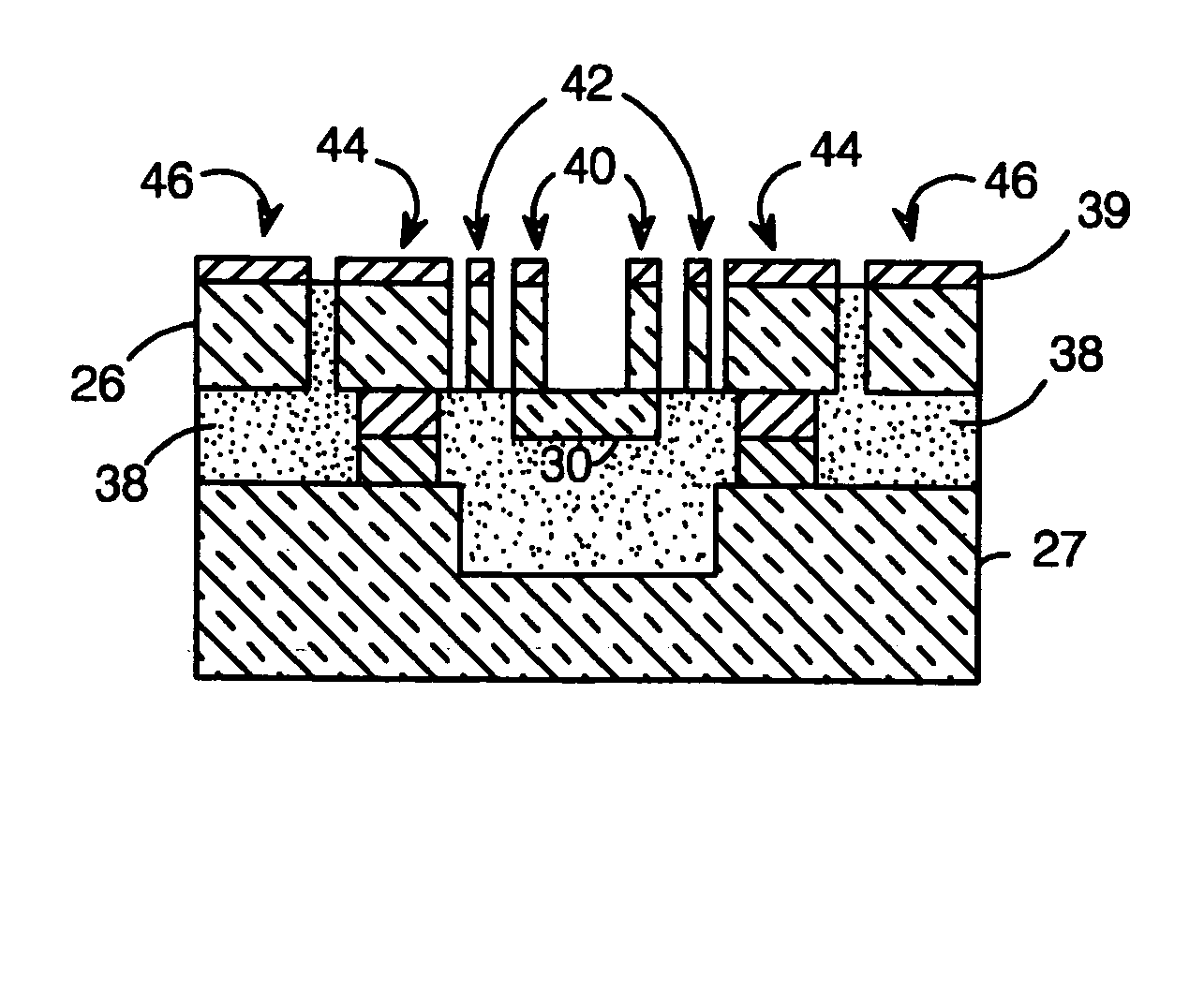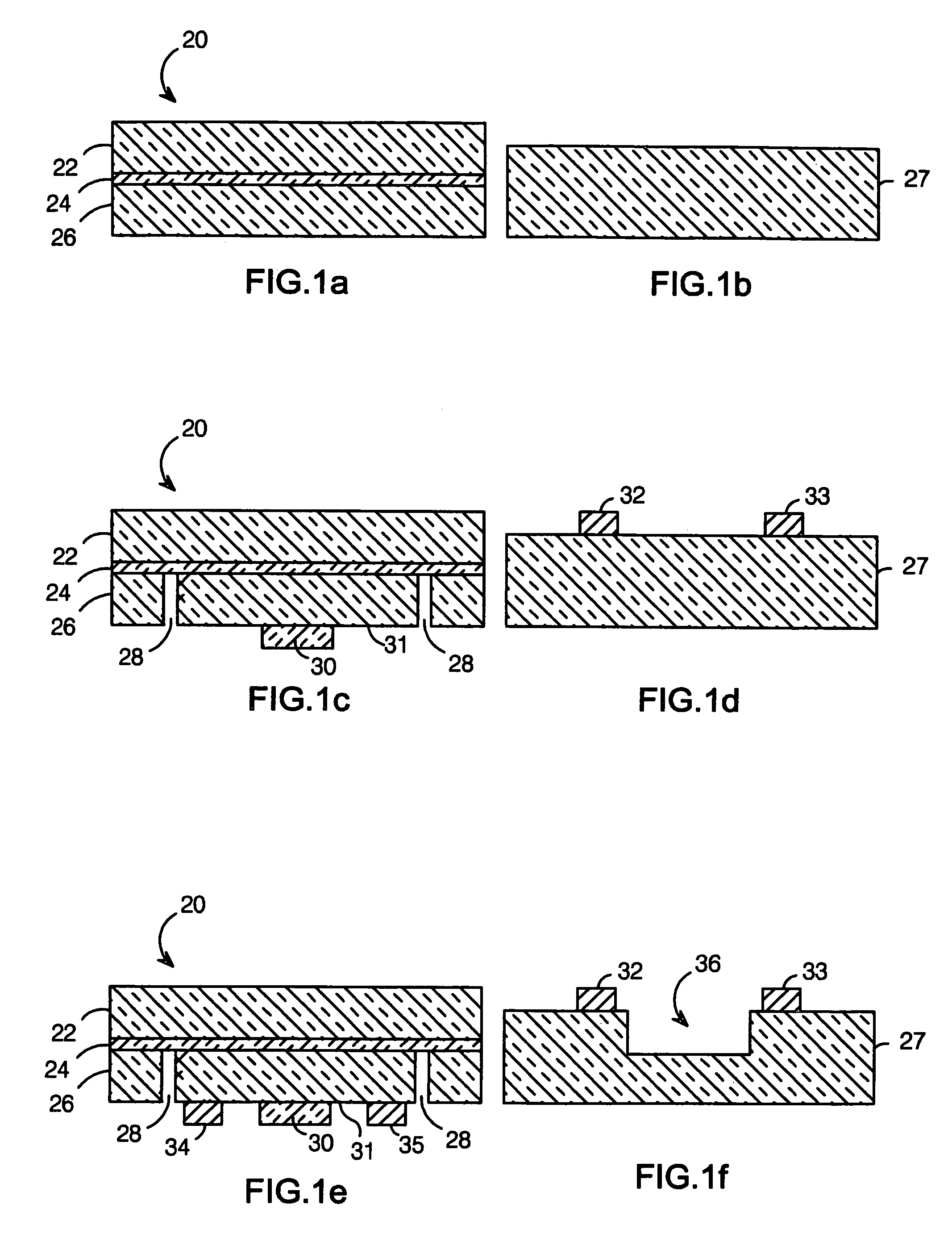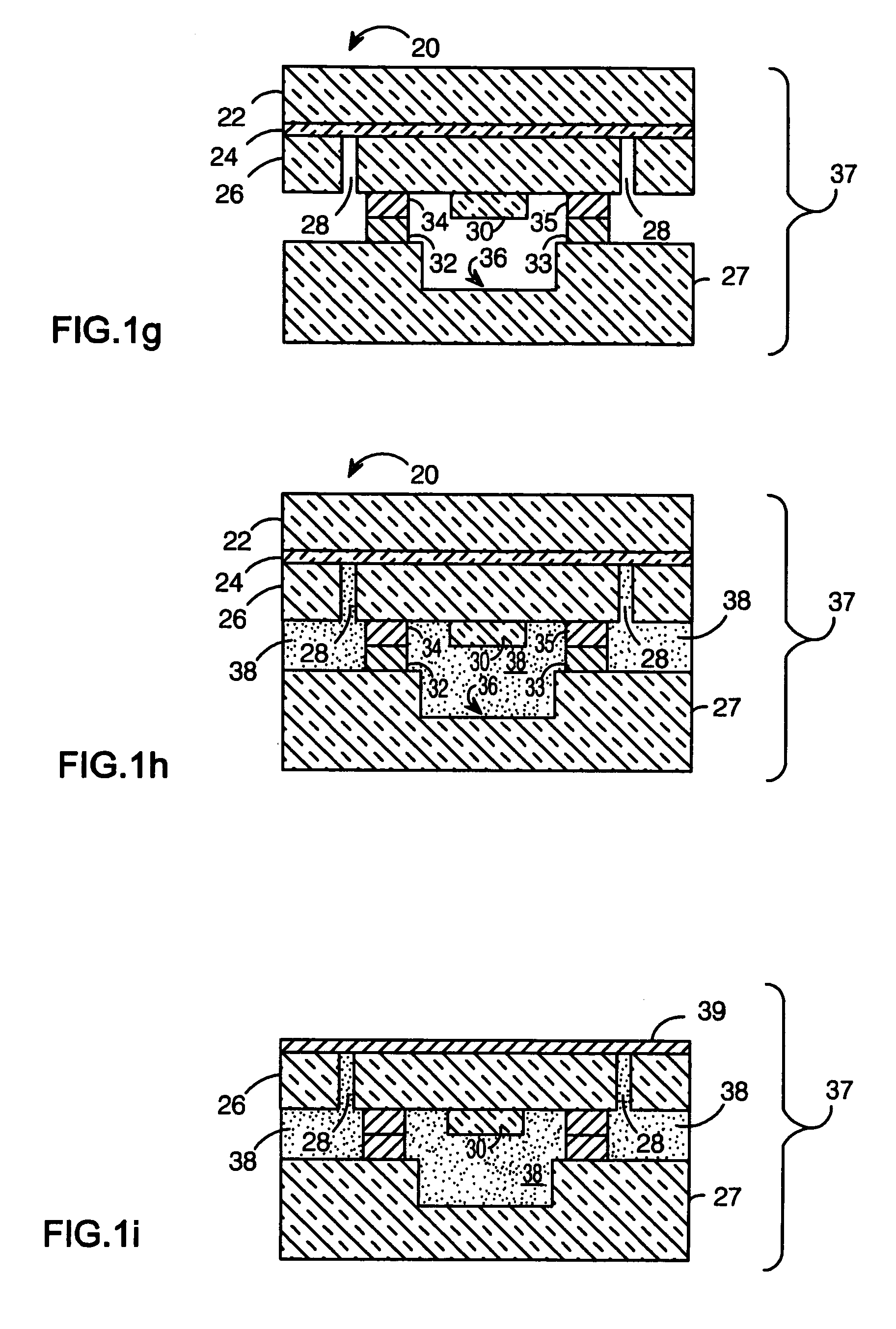High temperature microelectromechanical (MEM) devices and fabrication method
a microelectromechanical and fabrication method technology, applied in the field of microelectromechanical (mem) devices, can solve the problems of metallization layer, aluminum-based metallization layer, and device failure in this manner, and achieve the effects of reducing the number of microelectromechanical devices
- Summary
- Abstract
- Description
- Claims
- Application Information
AI Technical Summary
Benefits of technology
Problems solved by technology
Method used
Image
Examples
Embodiment Construction
[0016]The present invention is directed to MEM devices and a fabrication method for making same that enables the devices to withstand higher temperatures than similar devices fabricated using prior art methods. Epoxy and metallization that might degrade under high temperature conditions are replaced with a high temperature bonding material and refractory metals, greatly extending the range of temperatures over which MEM devices such as a viscosity sensor can operate without failing.
[0017]In general, MEM devices per the present invention have a stationary element and a movable element displaceable relative to the stationary element. Each device comprises a semiconductor wafer—preferably an SOI wafer, a substrate—which can be insulating or conductive, and a high temperature bond which bonds the wafer to the substrate to form a composite structure. Portions of the composite structure are patterned and etched to define the stationary and movable MEM elements such that the movable elemen...
PUM
| Property | Measurement | Unit |
|---|---|---|
| temperatures | aaaaa | aaaaa |
| pressure | aaaaa | aaaaa |
| temperature | aaaaa | aaaaa |
Abstract
Description
Claims
Application Information
 Login to View More
Login to View More - R&D
- Intellectual Property
- Life Sciences
- Materials
- Tech Scout
- Unparalleled Data Quality
- Higher Quality Content
- 60% Fewer Hallucinations
Browse by: Latest US Patents, China's latest patents, Technical Efficacy Thesaurus, Application Domain, Technology Topic, Popular Technical Reports.
© 2025 PatSnap. All rights reserved.Legal|Privacy policy|Modern Slavery Act Transparency Statement|Sitemap|About US| Contact US: help@patsnap.com



